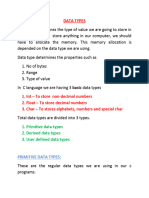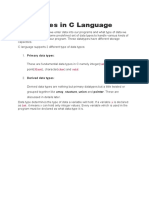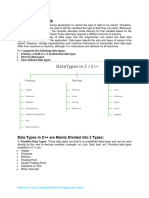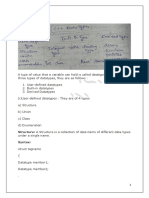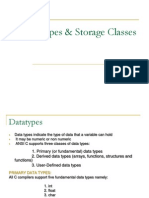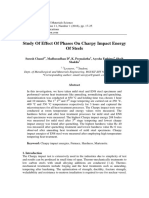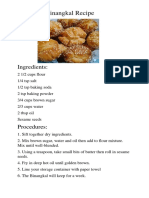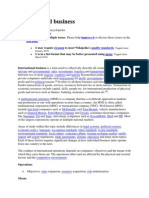0% found this document useful (0 votes)
10 views4 pagesData Types
The document explains data types in programming, categorizing them into primary, derived, and user-defined types. Primary data types include character, integer, float, and void types, each with specific memory sizes and range specifications. Derived data types encompass arrays, structures, unions, and pointers, while user-defined types are created using typedef and enum.
Uploaded by
RajasomeshwarCopyright
© © All Rights Reserved
We take content rights seriously. If you suspect this is your content, claim it here.
Available Formats
Download as DOCX, PDF, TXT or read online on Scribd
0% found this document useful (0 votes)
10 views4 pagesData Types
The document explains data types in programming, categorizing them into primary, derived, and user-defined types. Primary data types include character, integer, float, and void types, each with specific memory sizes and range specifications. Derived data types encompass arrays, structures, unions, and pointers, while user-defined types are created using typedef and enum.
Uploaded by
RajasomeshwarCopyright
© © All Rights Reserved
We take content rights seriously. If you suspect this is your content, claim it here.
Available Formats
Download as DOCX, PDF, TXT or read online on Scribd
/ 4


